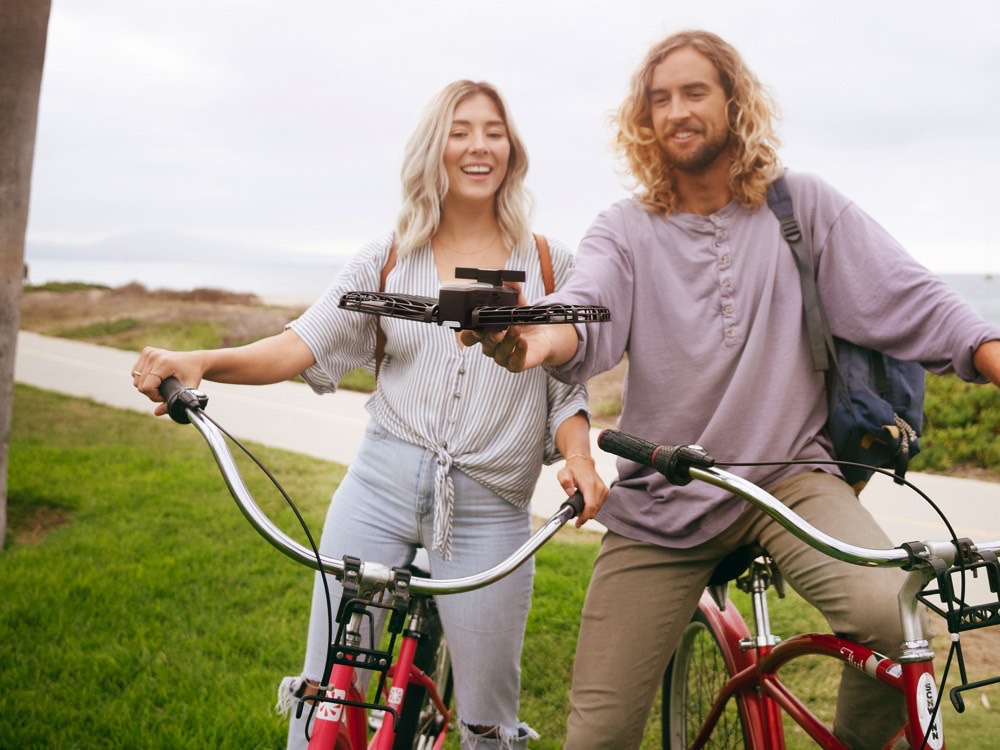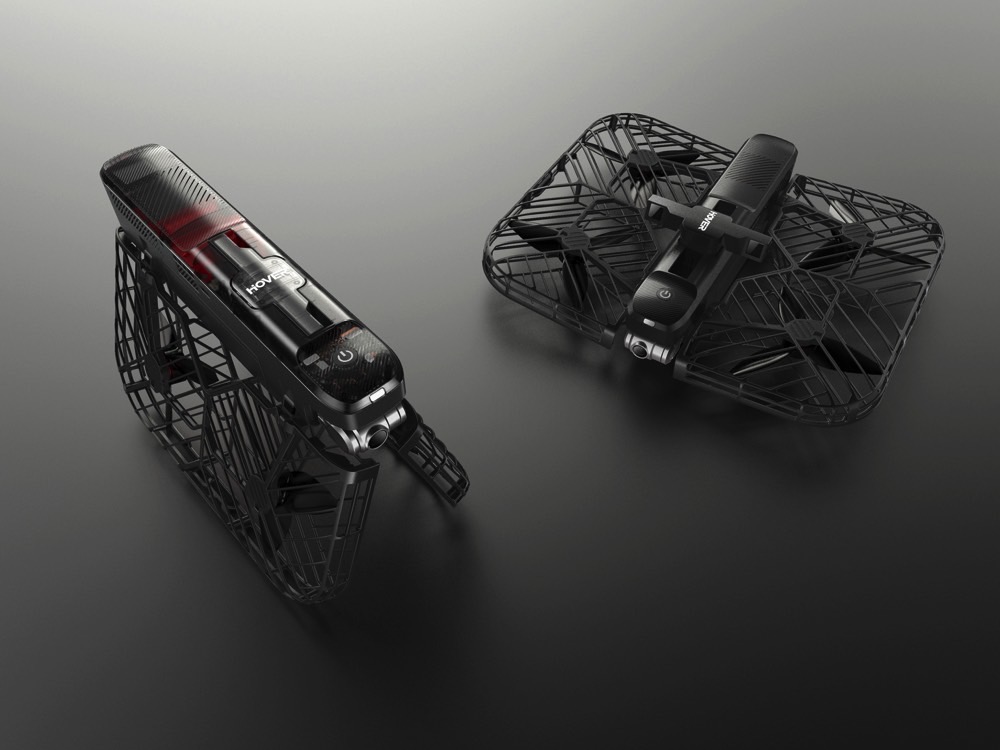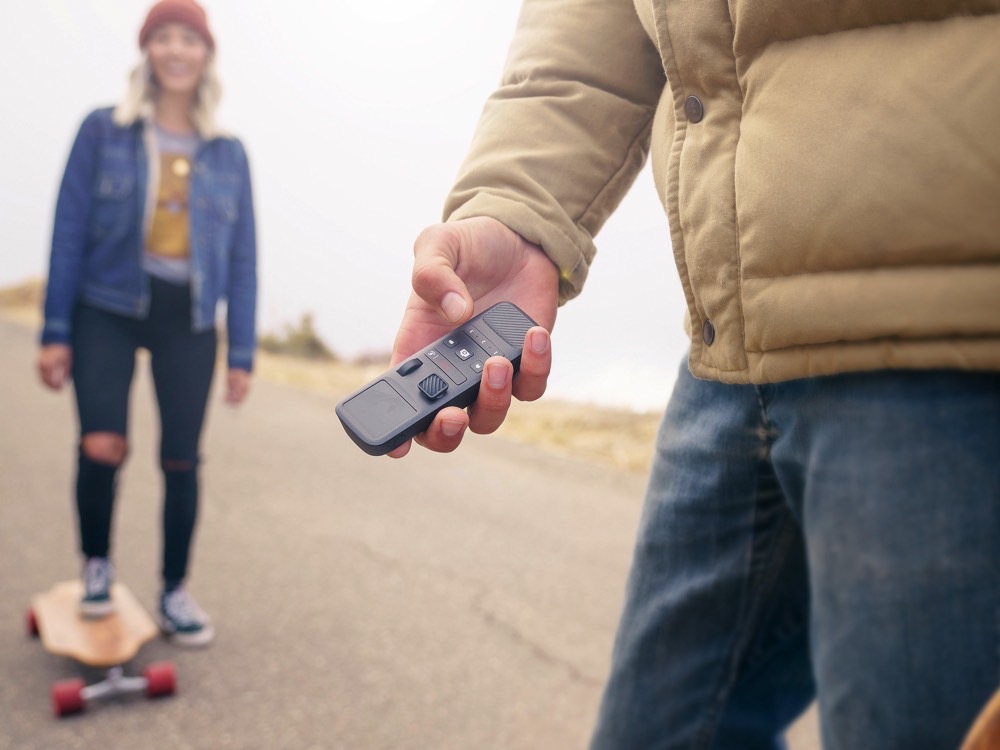You’ve got to hand it to the folks at ZeroZero Robotics — they certainly know how to take criticism. Today marks the crowdfunding launch of the company’s latest product, the Hover 2. It’s a selfie drone that looks a lot like ZeroZero’s first drone, the Hover Camera Passport, but that’s where the similarities end.
When we reviewed the Hover Camera Passport, a selfie drone with a unique folding design, we really liked what we saw. It had all the makings of a great selfie drone, including 4K videos, impressive autonomous flight modes, and a carbon fiber safety cage that completely protects people from its propellers. But there were a few drawbacks too. Flight time, operational distances, image stabilization, and a lack of frame-rate options were all identified as areas for improvement. The Hover 2 addresses all of these critiques, and goes even further. On paper, it looks like it’s not only a worthy successor to the Passport — it might well be the best selfie drone on the planet. Backers of the Hover 2 Kickstarter campaign are scheduled to get their drones by March of next year, and here’s what they can expect:
The Hover 2 preserves the iconic, folding carbon fiber prop cage, but now it’s removable, and can be swapped out for a more aerodynamic set of “blastoff” guards. The camera is now mounted to a 2-axis gimbal, and uses electronic image stabilization for the 3rd axis, much like DJI’s Spark. There’s no more integrated flash, but the new CMOS sensor is HDR-capable, and adds a burst-shooting mode for stills. There’s an abundance of video options too, with resolutions that run from 720p at 60 or 120 frames per second, all the way up to 4K at 3o fps, with stops along the way at 1080p and 2.7K.
The claimed battery life is good for 23 minutes of flight, or seven minutes more than the Spark, and it’s fast too at 16m/s, which translates to 57 km/h, again edging out the Spark’s 50 km/h.
Of course, what good is that speed, if it can’t go very far? Unlike the Passport, which was limited to a paltry 20 meters of operational distance, the Hover 2 can fly an impressive 5 km away from its operator, and has onboard GPS. To take advantage of this newfound freedom, you’ll need to spring for the optional Blastoff controller, which bears a passing resemblance to DJI’s remote controller for the Spark. There’s also an optional “palm-pilot” remote for smartphone-free, one-handed operation of the drone’s basic functions.
Some of these features put the Hover 2 on par with the DJI Spark, but the most impressive feature on the Hover 2 is its obstacle-avoidance system. It’s a stereoscopic set of optical radar sensors, mounted in a motorized nacelle that deploys from the top of the aircraft and can swivel a full 360 degrees. These robotic eyes, combined with ZeroZero’s proprietary software, give the Hover 2 a degree of situational awareness that allows fully autonomous flight, according to the company. To put it in perspective, the Hover 2’s avoidance and follow abilities look like they might be the equivalent of the Skydio R1, a $1,999 camera drone that also promises full autonomy — but in a $400 drone.
The Hover 2 uses its autonomy to do more than follow. It can lead too, with the addition of an “omni-follow” mode that lets the drone track its subjects from the sides, or from in front, in addition to the standard from-behind shots. Using the palm pilot remote, users can switch between these modes mid-flight.
Is all of this too good to be true? Check back with us in the new year and we’ll let you know — we’ll have a chance to get some hands-on time with the Hover 2, well before it ships to backers. One thing we can already say with confidence: You’ll need to be careful when flying the Hover 2. At 490 grams, it weighs more than a DJI Spark, and thus will require due diligence so that you don’t run afoul of the Federal Aviation Administration’s drone registration and flight rules.







